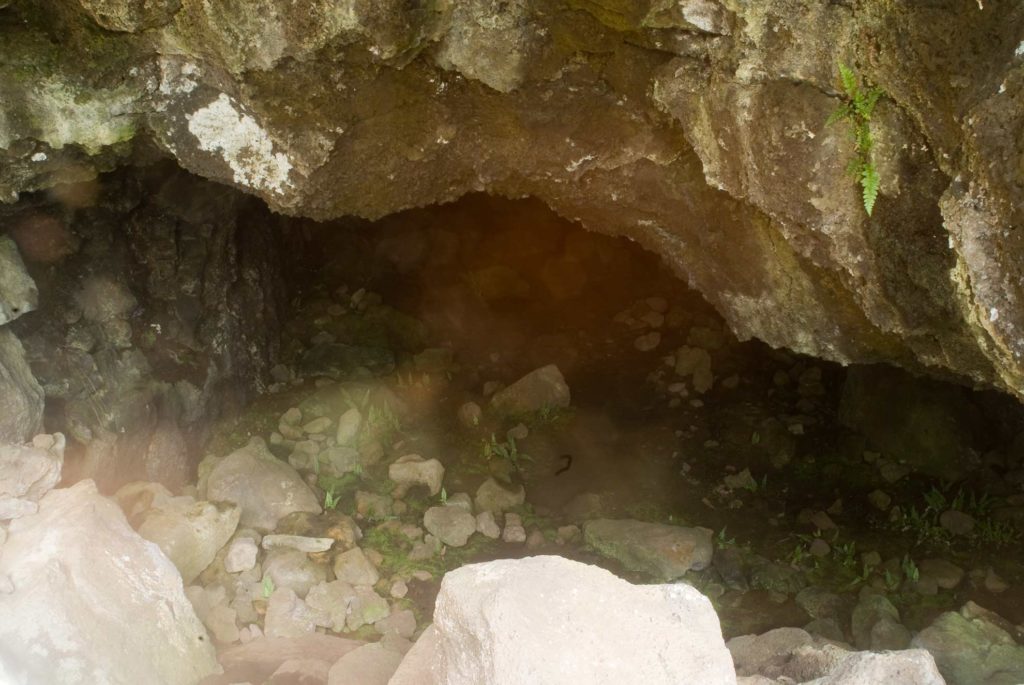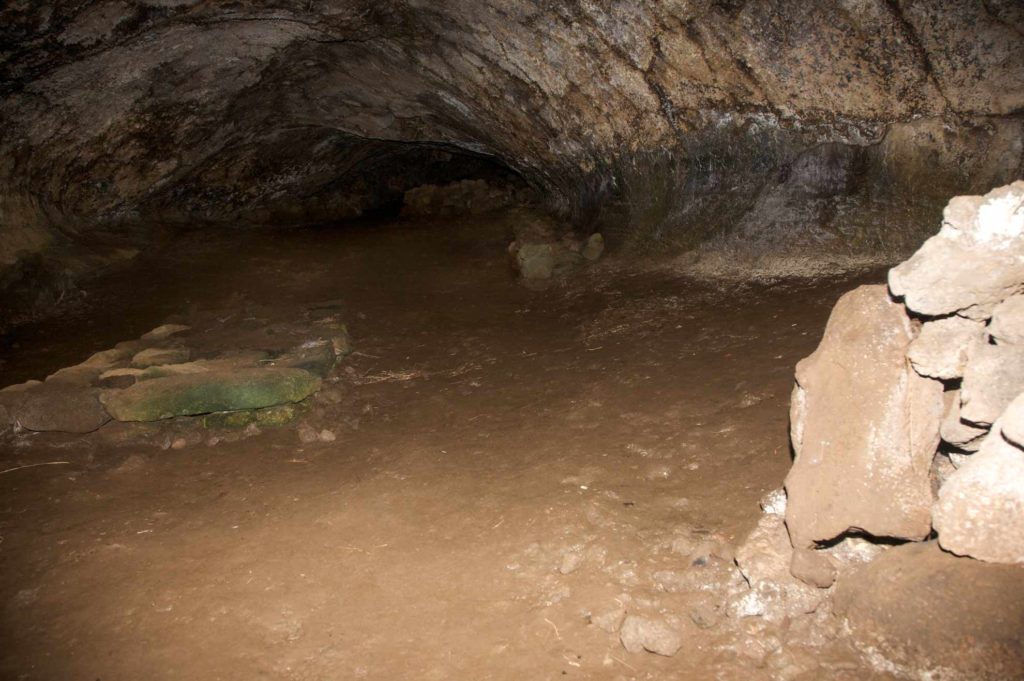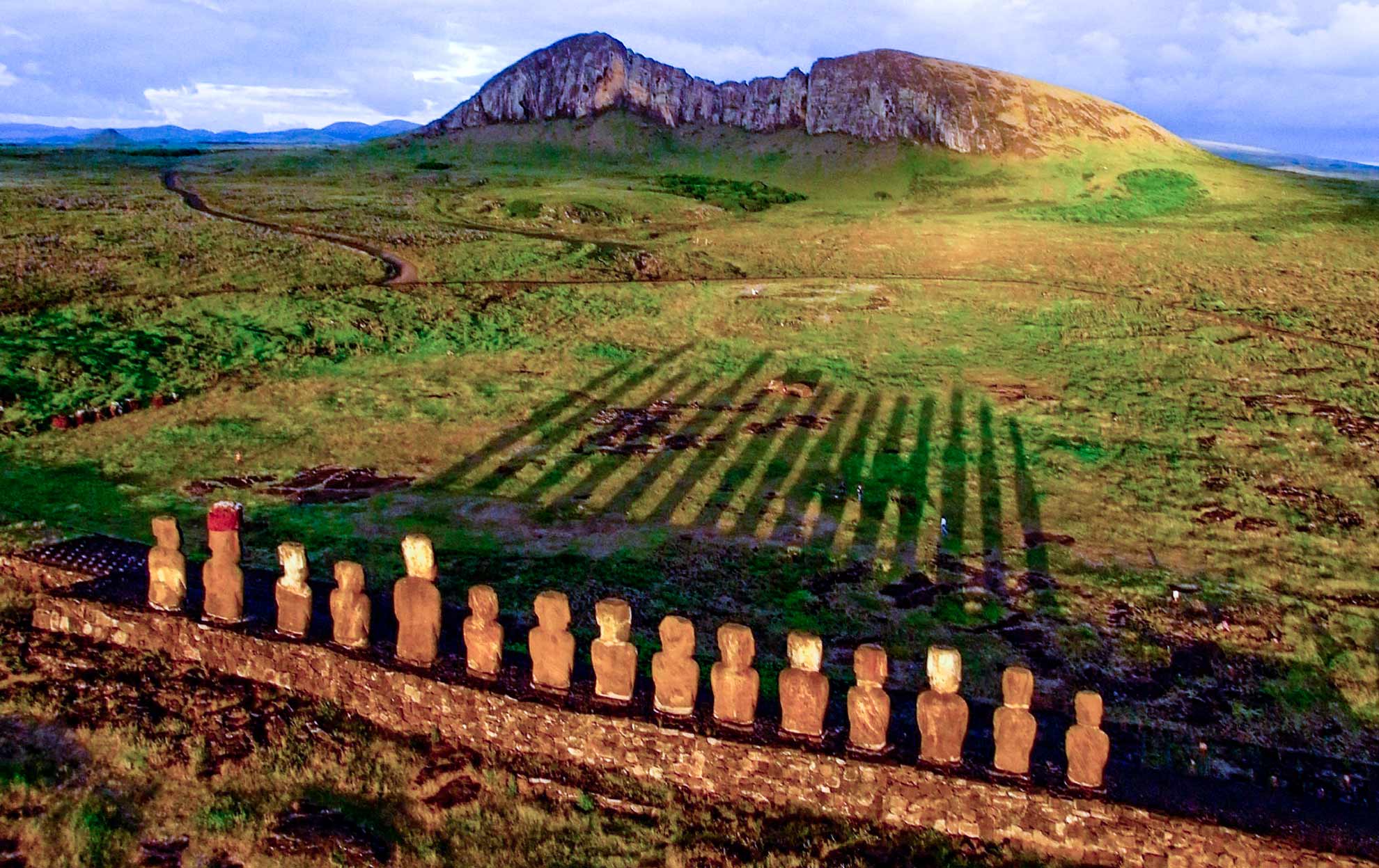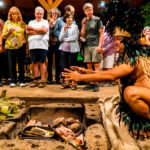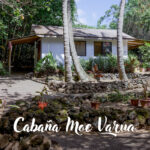Underneath a shallow layer of soil over the ancient volcanic rock lies an invisible world full of legends and mystery. Rapa Nui has volcanic bedrock which is like a giant petrified sponge, full of caves and caverns of many sizes, from simple grottos and narrow passageways to spacious vaulted rooms. Speleological research has discovered, to date, more than 10 kilometers (6 miles) of underground passageways and explored more than 315 caves in the area of Roiho and on the cliff walls of the Rano Kau, Rano Raraku and Poike volcanos.
Since the arrival of the first inhabitants to the Island, the caves have formed an essential part of religious, social and everyday life. Oral tradition tells that before entering a cave it is necessary to ask the protection of the spirits, because the earth and the caves are sacred and Tapu (taboo). On many cavern walls, petroglyphs and pictographs of the god Make Make, of the Bird-Man and other figures from the ancient mythology can still be appreciated.
Caverns served not only as residences for entire families, such as at Ana Te Pahu, or as refuges, but at least two of them, Ana O Keke and Ana Hue Neru, were used to whiten the skin of young virgins for religious purposes and in others, such as Ana Kai Tangata and Ana Te Pora, religious ceremonies were held. Some of the caves seem to be collective tombs and others have individual burials. In the past, the elderly would retire to the caves when they felt it was their time to die. The most important caves should be visited with a specialized guide.
Ana Kai Taŋata
Ana Kai Tangata is found on the way to the Rano Kau volcano. On one section of the ceiling, figures of the Manutara (sooty tern) painted in red and black over the basaltic rock can still be seen. These designs wererelated to the Tangata Manu, or Bird-Man, ceremonies. According to traditional lore, following the coronation of the new Bird-Man, frenzied celebrations were held in which human victims, selected by the priests or the Tangata Manu himself, would be sacrificed to the god Make Make. From this, the cave received its name of Cave of the Cannibals.
Ana Kakeŋa
In the Roiho district, along the plain on the western coast in front of the islets of Motu Tautara, this cave is difficult to find. A story from the last century tells of two lovers, separated by one of them being forced to marry someone else, who went to hide in this cave, blocking the entrance and dying together as they watched the violent waves which can be seen from the two openings at the far end of this cavern.
Ana Te Pahu
This cavern, one of the most visited, is located in the Roiho area. It is covered by a layer of solidified lava which resonates like a drum when someone jumps on it, which gives it the name Te Pahu (drum). It was used as a tribal residence with natural sources of water and cultivated plants. It has three rather long branches which measure some 1,500 meters (nearly 5000 feet) in all.
Ana Te Pora
This was a ritual cavern 228 meters (750 feet) long which connects to the shore cliffs, also in the Roiho sector. In the main chamber is a ritual stone platform with stone fencing facing the rock walls. In the back, a special construction around the entrance can be appreciated. In some of the side chambers, human bones can still be found.















